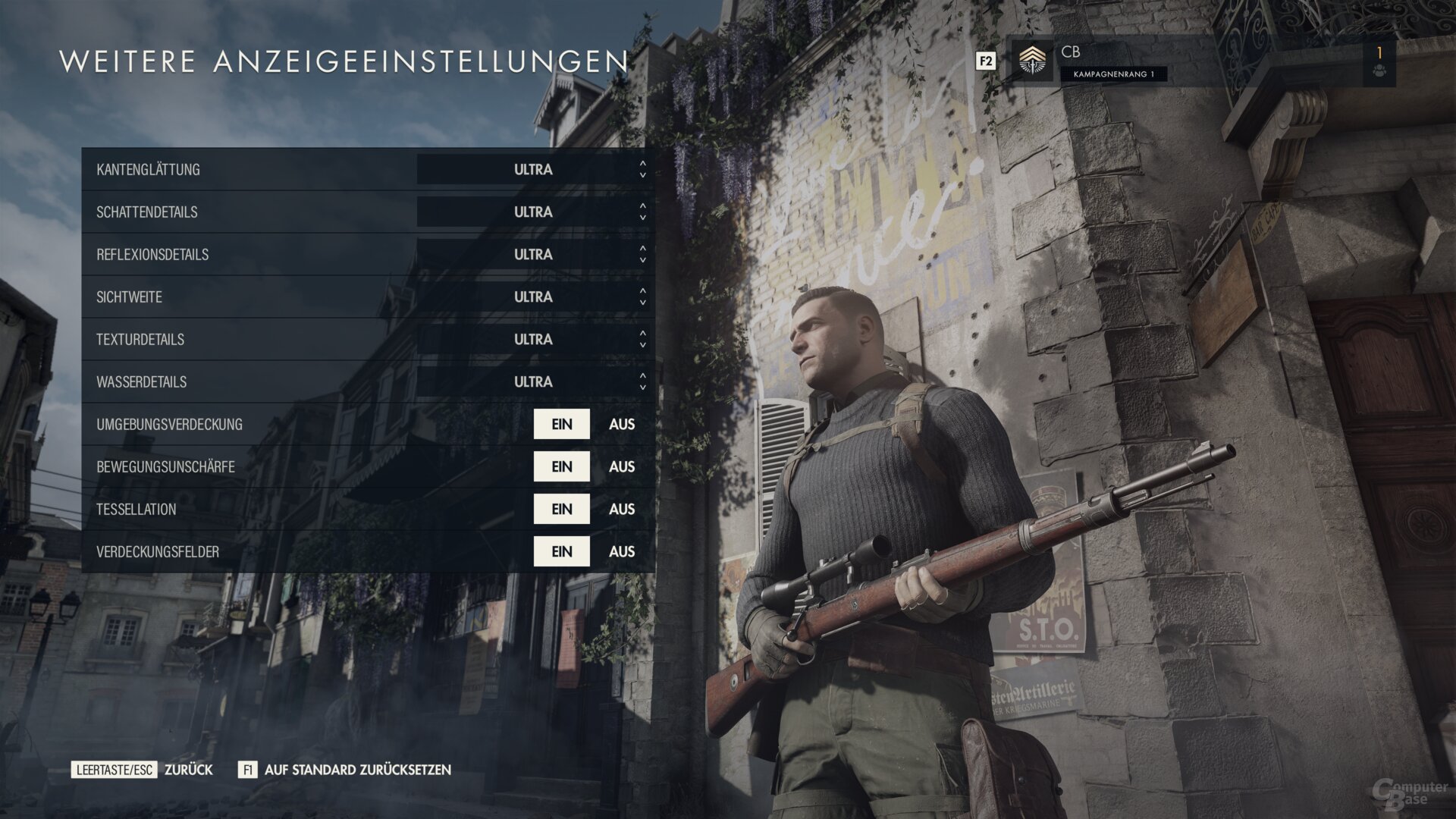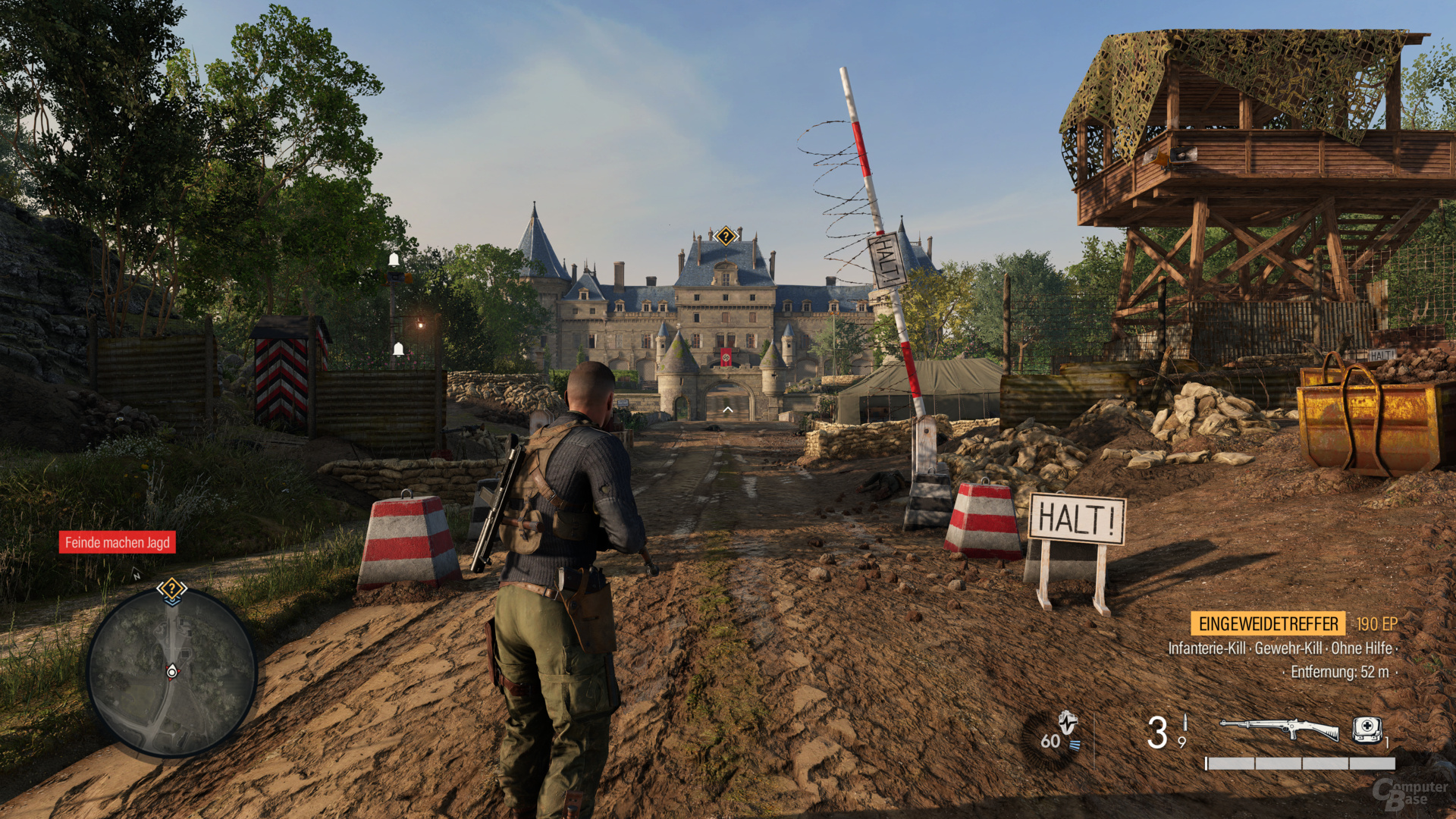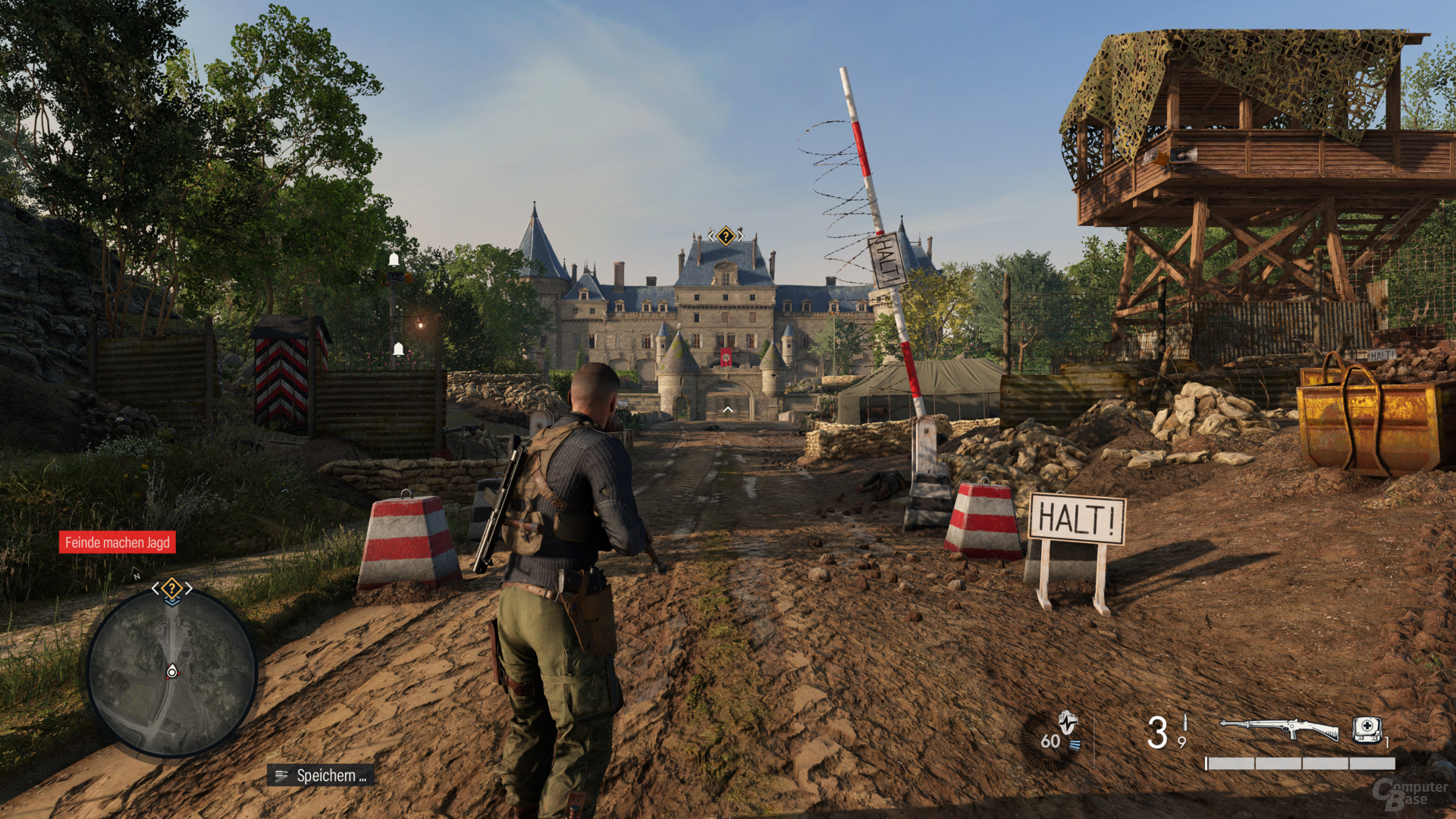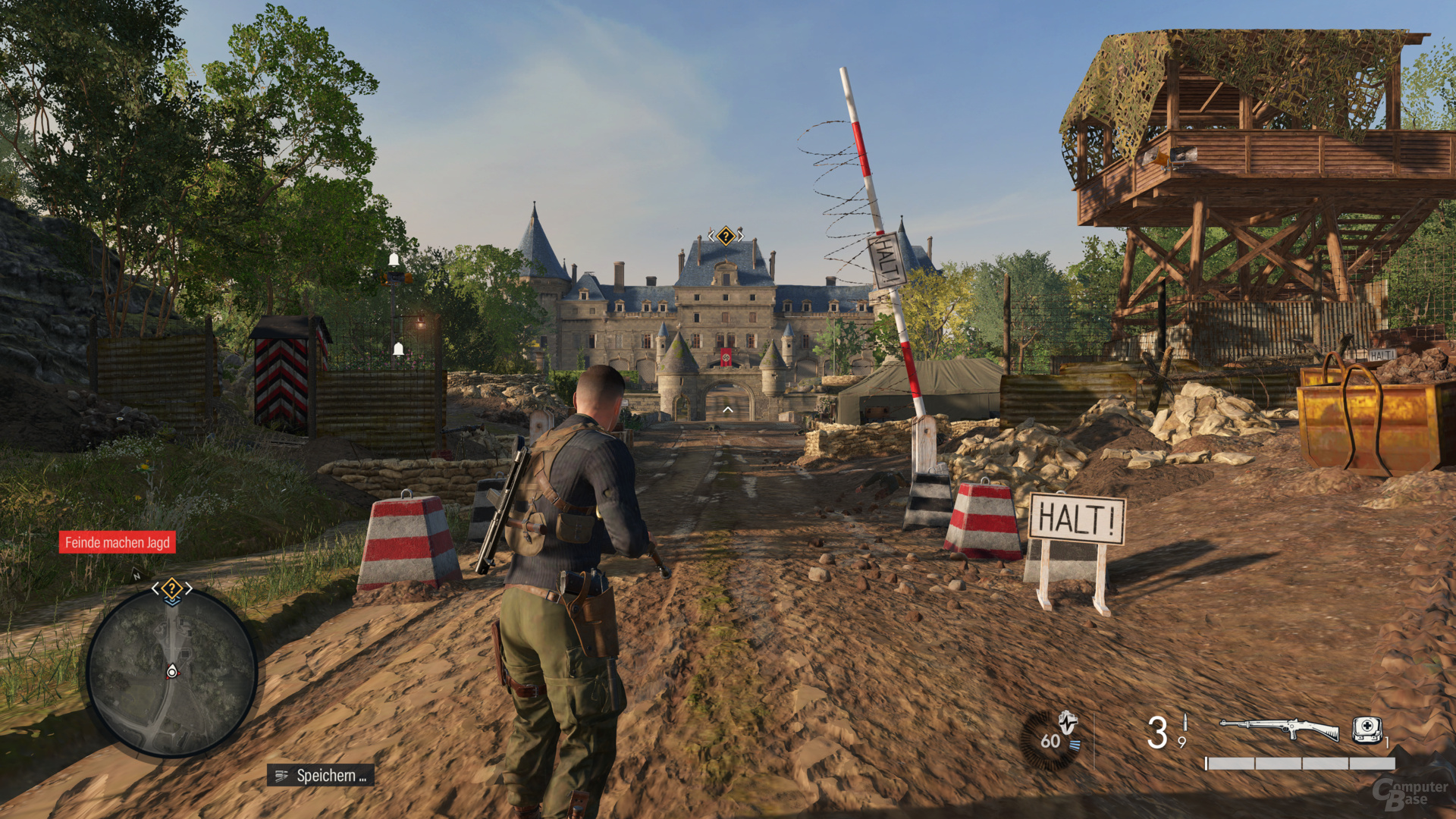Rebellion once again sends players hunting with the sniper rifle in Sniper Elite 5. In addition to the usual graphics card benchmarks with the PC version, ComputerBase also took a closer look at the differences between DirectX 12 and Vulkan. Textures and framepacing are highlights, but it flickers.
Table of contents
- 1 GeForce and Radeon duel on FPS and Frametimes
- Sniper Elite 5 brings more of the same
- The graphics flicker all at once
- Standard fare in the graphics menu
- Four graphics presets visible differences
- 2 benchmarks, DX12 vs. Vulkan, frame times and VRAM
- The test system and the benchmark scene
- DirectX 12 vs. Vulkan with and without Async Compute
- Benchmarks in Full HD, WQHD and Ultra HD
- Absolutely exemplary framepacing
- Well positioned with 8 GB, from 10 GB on the safe side
- 3 Game review and conclusion
- How good is Sniper Elite 5?
- Conclusion
Sniper Elite 5 brings more of the same
After a little more than five years, Rebellion is launching the fifth part of the well-known Sniper Elite game series. And with Sniper Elite 5, the buyer actually gets exactly what the previous parts did, only a little more modern and just more of it. Those who liked the predecessors will be happy with the latest iteration.
Rebellion again uses the in-house Asura engine, but has updated it compared to its direct predecessor. Visually, the AA game leaves a decent impression with one exception, but of course it can't keep up with a large-scale production (more on that later). Surface details and textures as well as framepacing are the highlights of the graphics, but in terms of animation, lighting and character representation, Sniper Elite 5 cannot keep up with other games. And it flickers a lot.
The graphic flickers in one go
Sniper Elite 5 relies on a post-processing version without a temporal component for anti-aliasing. As a result, the graphics are quite sharp and without graphic errors even in low resolutions, but the antialiasing does not correctly capture many objects. The result: It flickers when you move.
Even in high resolutions such as Ultra HD, Sniper Elite 5 still flickers clearly, but in lower resolutions it is extreme. The developers should definitely have used temporal anti-aliasing here, because the solution used in the game is completely overwhelmed.
FSR 1.0 only does everything even worse
Sniper Elite 5 supports AMD's FidelityFX Super Resolution 1.0, which as a purely spatial upscaling makes the effect even worse. Because unlike FSR 2.0, FSR 1.0 cannot do anything about flickering. Accordingly, Rebellion should have done without FSR 1.0 completely, the technology cannot be used sensibly. Also, since Sniper Elite 5 lacks temporal anti-aliasing, it's unlikely that modern upsampling in the form of FSR 2.0 or Nvidia DLSS will be patched in. Because this would mean more work than with other games, which the relatively small development team can probably not handle.
In addition to the low-level API DirectX 12, Sniper Elite 5 also supports Vulkan; DirectX 12 is active by default. In addition, Async Compute can be switched on or off for both interfaces. The feature is active by default.
Standard fare in the graphics menu
Sniper Elite 5 offers a rudimentary graphics menu on PC. There are several individual graphic options and four different graphic presets: “Low”, “Medium”, “High” and “Ultra”, whereby “Ultra” also represents the maximum level of detail. In addition, the game has its own downsampling and upsampling, which allows the render resolution to be set freely in 5 percent increments between 50 and 200 percent.
Between the APIs DirectX 12 and Vulkan cannot be changed in the game itself, this is only possible in its own launcher and thus before starting Sniper Elite 5.
-
 The graphics menu of Sniper Elite 5
The graphics menu of Sniper Elite 5
Image 1 of 2
 The graphics menu of Sniper Elite 5
The graphics menu of Sniper Elite 5Four graphic presets with visible differences
The four graphic presets “Ultra”, “High”, “Medium” and “Low” all show optical differences. For example, more objects cast shadows on “Ultra” than on “High”, and some of the shadows have a higher resolution. Furthermore, the visibility with “Ultra” is higher. Objects at a distance show more details or are sometimes only shown in the first place. The differences are generally not too great, however, in the event of performance problems you can switch back to “High” without hesitation.
The “Medium” setting works much more aggressively. The textures clearly lose their sharpness, and the surface details are visibly reduced. The shadows are further reduced and the view range is noticeably reduced even at medium distances. The low preset uses the same adjustment screws even more intensively. “Low” and “Medium” are therefore not recommended for visual reasons.
Every graphic preset brings a big FPS boost in Sniper Elite 5. Those who do without the highest setting “Ultra” and instead reduce the graphics to “High” accelerate the Radeon RX 6800 XT by 46 percent and the GeForce RTX 3080 by 48 percent. Accordingly, the tuning potential is already high with this setting, but even more would be possible in the event of performance problems.
-
 Download Ultra Preset
Download Ultra Preset
Figure 1 of 4
 High Preset Download
High Preset Download Medium Preset Download
Medium Preset Download Low Preset Download
Low Preset DownloadBecause the medium presets increase the FPS on the AMD GPU by another 29 percent, with the Nvidia counterpart it is 25 percent. And with the low preset there is another, final boost of 38 and 31 percent respectively.
Graphic presets in comparison – 3,840 × 2,160
- AMD Radeon RX 6800 XT:
- Low-Preset154.3
- Medium Preset112.2
- High Preset87.2
- Ultra Preset59.8
- Nvidia GeForce RTX 3080:
- Low-Preset143.7
- Medium Preset109.5
- High Preset87.3
- Ultra Preset59.0
< /li>
Unit: frames per second (FPS) Page 1/3 Next page
Benchmarks, DX12 vs. Vulkan, frametimes and VRAM